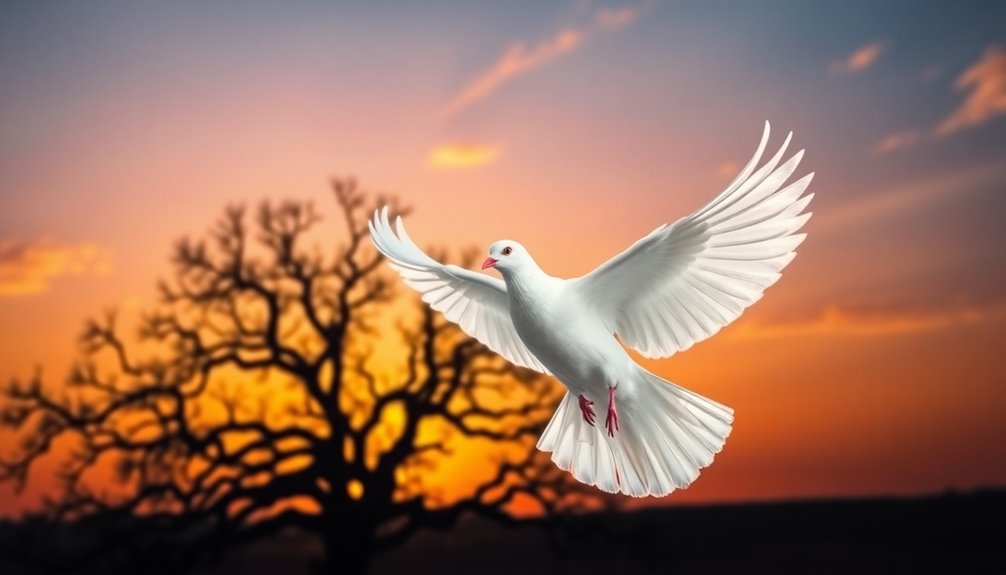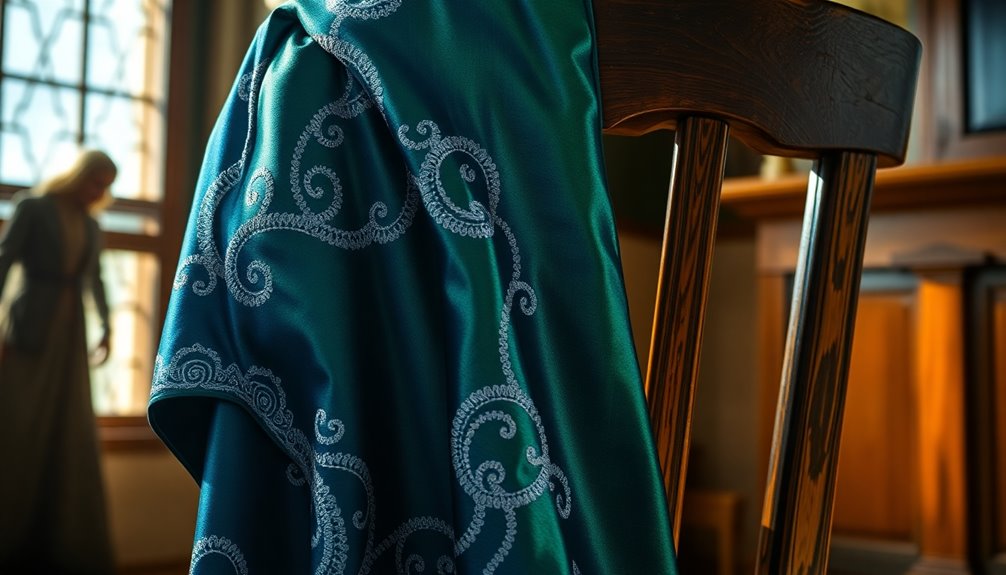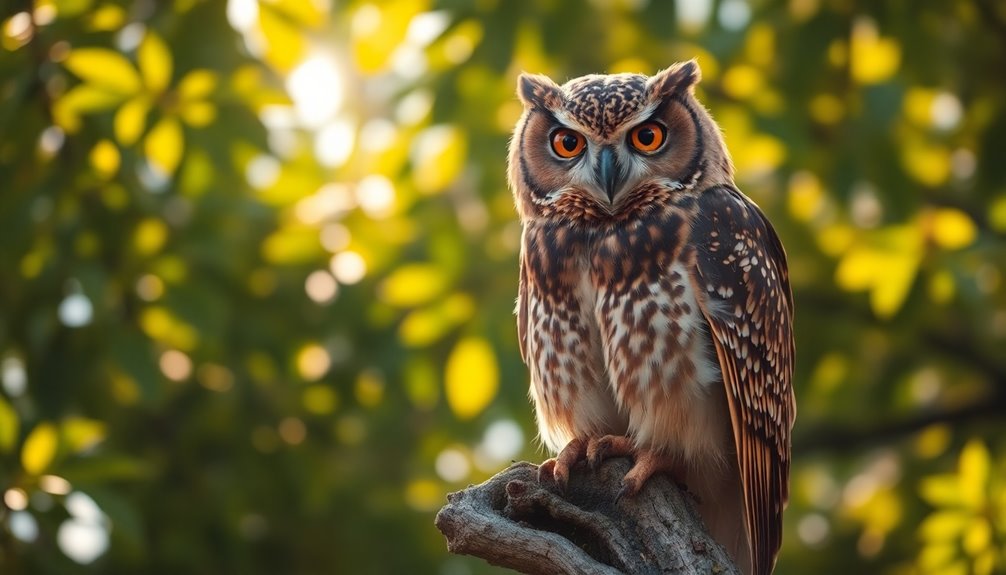Symbolism is everywhere in your life! It helps you understand feelings and ideas that go beyond what you see. Colors, like blue for sadness or yellow for joy, send powerful messages. You see symbols in art, like a heart for love or a dove for peace. They also pop up in literature and movies, adding depth to stories. Even ads use symbols to connect with you emotionally, like a picture of a mom and child for care. By recognizing these symbols, you can enrich your understanding of the world around you. Stick around, and you'll discover even more fascinating examples!
Key Takeaways
- Symbolism in literature and art conveys complex ideas and emotions, allowing deeper connections with audiences and enriching narratives.
- National flags symbolize identity and unity, fostering a sense of belonging and pride within communities.
- Everyday warning symbols communicate safety information quickly, enhancing public awareness and preventing hazards.
- In advertising, symbols evoke emotions, creating relatable narratives that resonate with consumers and influence purchasing decisions.
- Cultural and religious symbols strengthen community bonds, connecting individuals to shared beliefs and traditions, enhancing spiritual practices.
Understanding Symbolism
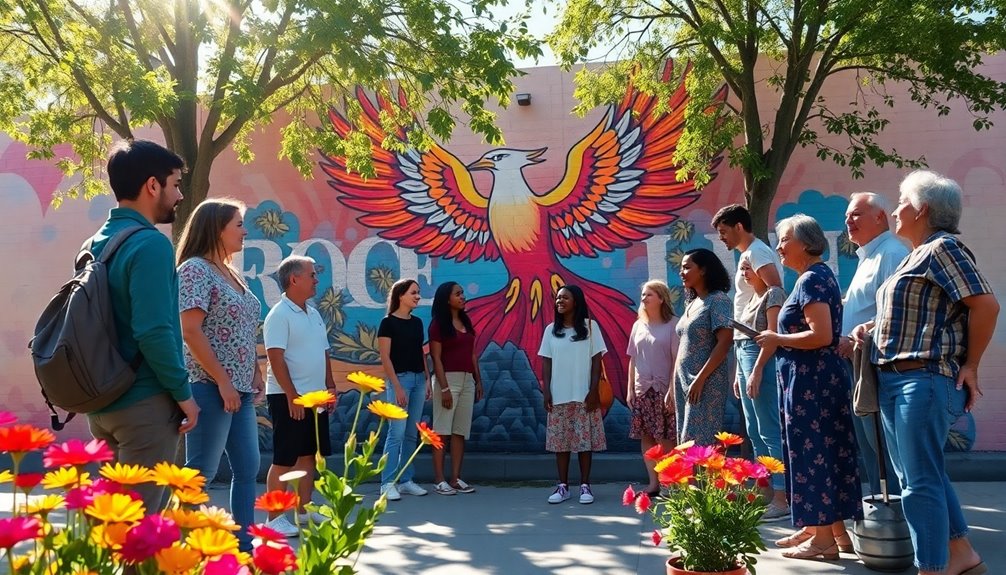
Understanding symbolism enriches our perception of the world around us. It helps you recognize how objects, colors, or even shapes can convey ideas that go beyond their physical presence. For instance, think about colors like red, which can represent passion or danger. When you see a red stop sign, it grabs your attention and tells you to pause. That's the power of symbolism!
Everyday symbols, like warning signs, play a crucial role in keeping us safe. The skull and crossbones for poison quickly communicates danger. You don't need words; the symbol says it all!
Cultural symbols, such as national flags or religious icons, also connect people through shared values and beliefs, creating a sense of belonging. For example, the Lion of Judah symbolizes strength and courage, deeply rooted in various cultural identities.
However, context matters! The same symbol can mean different things depending on where you're or who you ask. That's why it's important to think critically about what you see and understand the surroundings.
Historical Significance
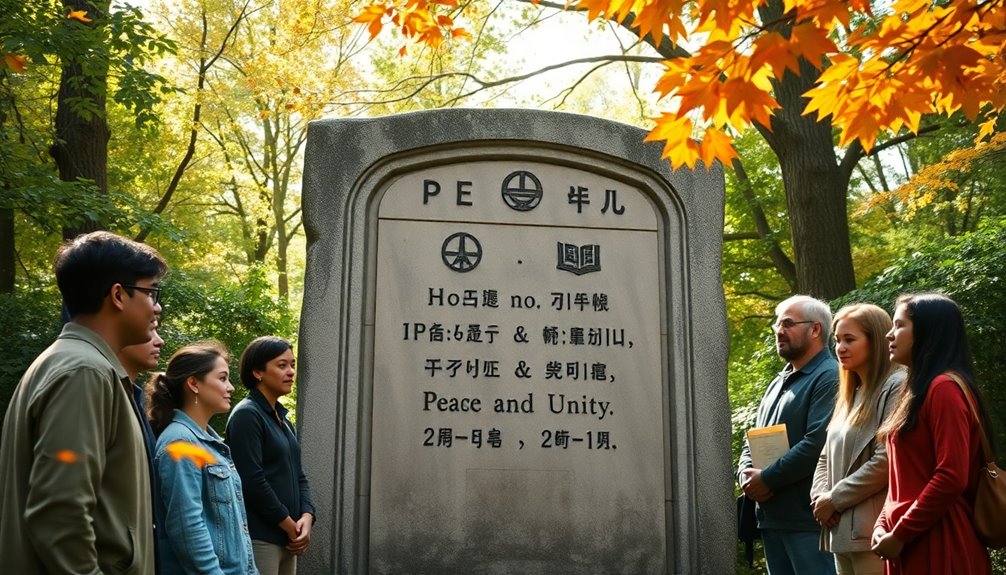
Throughout history, symbols have shaped human communication and culture in profound ways. You mightn't realize it, but ancient civilizations like the Egyptians and Sumerians used pictograms to tell stories and share ideas long before writing emerged. These early symbols laid the groundwork for today's symbolic meanings.
Religious symbols, such as the Christian cross and the Star of David, have also played significant roles. They connect people to their faith and community, showcasing deep spiritual meanings.
Think about how national flags and emblems create a sense of identity and unity among people. During celebrations or conflicts, these symbols rally folks together, making them feel part of something bigger.
Even in art and architecture, symbols matter. Mandalas in Hinduism and Buddhism reflect beliefs about the universe and our place within it.
This historical significance shows how our modern interpretations of symbols still echo those established centuries ago. So, when you see a symbol, remember that it carries a rich story. It connects you to the past, to cultures, and to shared human experiences, reminding you of the power that symbols hold in our lives today!
Common Types of Symbols
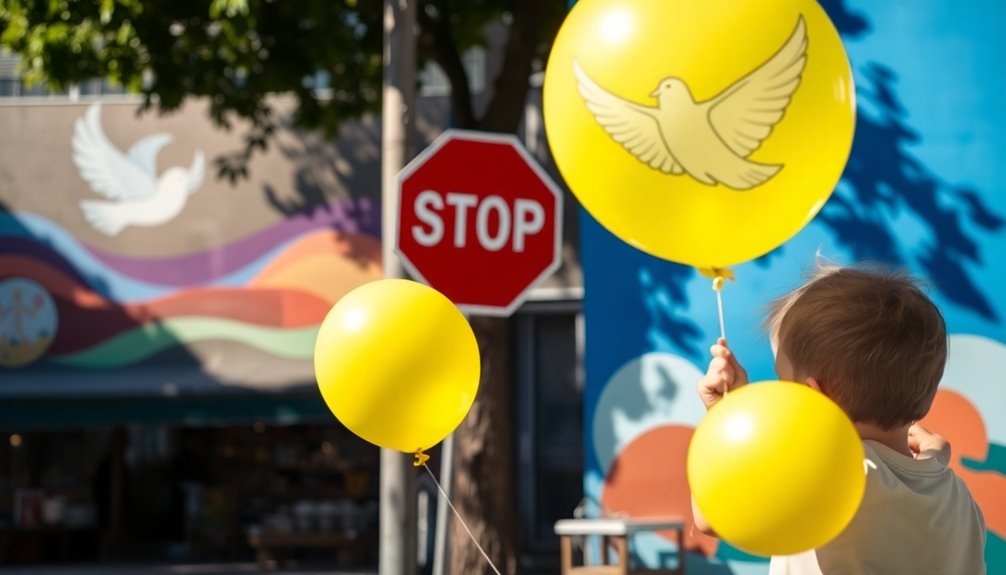
Symbols are all around us, and they help us understand the world better! You might see warning signs that use simple images, like exclamation points, to alert you to danger.
Plus, cultural and religious icons, like flags or crosses, connect us to our communities and beliefs, making the world a more colorful place!
Everyday Warning Symbols
Warning signs are everywhere, from the labels on cleaning products to the road signs you pass daily. These symbols help keep you safe in the material world. They communicate important messages quickly and clearly, so you can make smart choices.
Here are some common everyday warning symbols you might see:
| Symbol | Meaning |
|---|---|
| 💀 Skull and Crossbones | Poison and danger |
| ⚠️ Exclamation in Triangle | Caution, potential hazards |
| 🛑 Red Octagon | Stop, vehicles must halt |
| 🚭 No Smoking | Health warning about tobacco use |
| ☣️ Biohazard | Harmful materials or conditions |
Each symbol has a unique purpose. For instance, the skull and crossbones universally warns you about poison. The red octagon, recognized as a stop sign, tells drivers to halt at intersections, preventing accidents. Similarly, the no smoking sign helps promote a healthier environment.
Cultural and Religious Icons
Everyday symbols guide you in various aspects of life, but cultural and religious icons carry deeper meanings that resonate within communities. These icons, like the Christian cross, represent important beliefs such as faith and salvation. You can see how powerful these symbols are in people's lives.
Take national flags, for example. They reflect a country's identity, history, and values. Each color and design tells a story about the nation's heritage.
Similarly, in many religions, symbols like the Star of David in Judaism or the crescent moon and star in Islam hold significant meanings. They're used in rituals, art, and architecture, expressing shared beliefs and bringing people together.
Cultural symbols are also fascinating. For instance, totem poles among Indigenous peoples aren't only beautiful but also serve as historical records of lineage and community identity.
You'll notice that common symbols, like the peace sign and heart shape, have become universal icons, representing peace and love. These cultural and religious icons help create a sense of unity among people, reminding us of our shared values and beliefs.
Isn't it amazing how symbols can connect us all?
Symbolism in Literature and Art
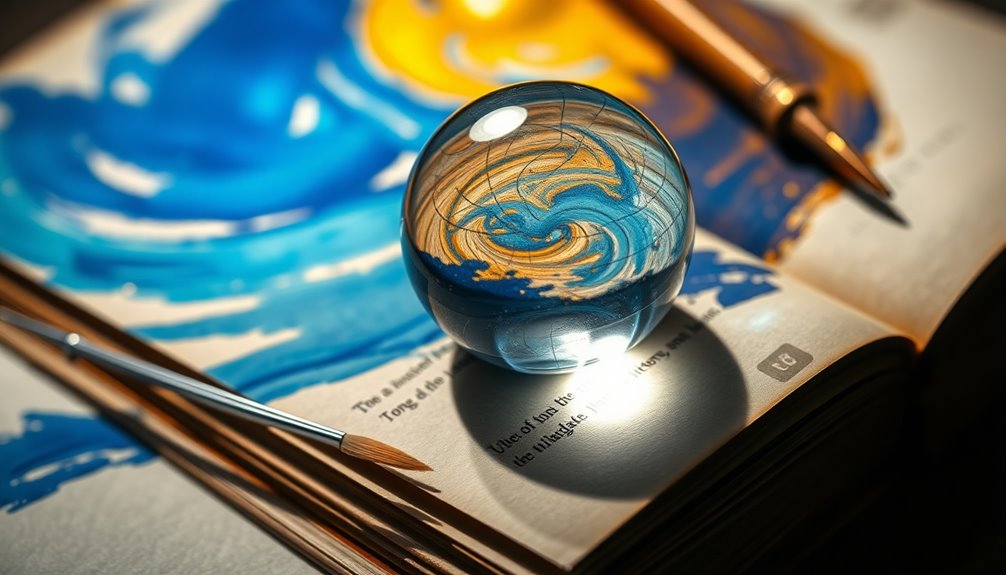
In literature and art, the power of symbolism transforms ordinary narratives and visuals into profound explorations of the human experience. Authors and artists use symbols like animals, colors, and objects to convey deeper meanings. For example, a main character might carry a red rose to symbolize love and passion. This adds complexity and emotional depth to the story.
Visual artists do something similar. They use colors to express feelings—like blue for sadness or yellow for joy. Shapes can also convey big ideas, helping you appreciate the artwork's hidden messages. A tree might stand for growth, while a broken mirror could reflect shattered dreams.
To help you understand, here's a table showing some common symbols:
| Symbol | Meaning | Example in Art/Literature |
|---|---|---|
| Red | Passion | A main character's love for someone |
| Dove | Peace | Representing harmony in a painting |
| Hourglass | Time | Characters facing decisions |
| Key | Opportunity | Releasing potential in a story |
| Water | Change | A river representing life's journey |
Modern Cultural Applications
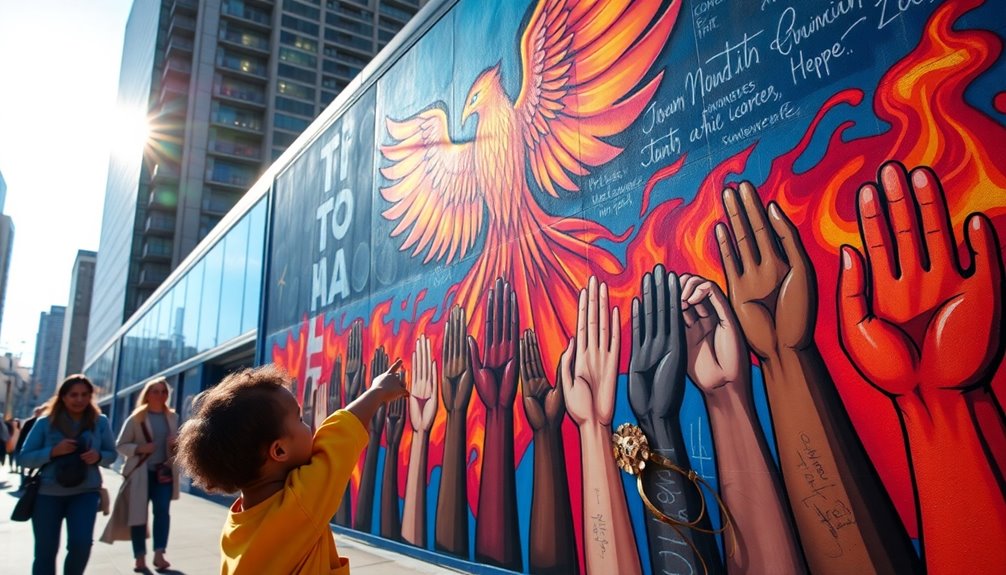
Symbolism is everywhere in our modern world, especially in advertising and media! Companies use colors and images to spark feelings and make their brands memorable.
Plus, movies and shows often tell powerful stories using symbols that connect with our everyday lives, making them even more exciting to watch!
Symbolism in Advertising
Advertising today thrives on the power of symbolism to connect with consumers on a deeper level. It taps into human nature, using colors, images, and emotions to grab your attention. For example, red often sparks feelings of urgency and excitement, while blue makes you feel trust and reliability. This clever use of color can sway your decisions without you even realizing it!
Logos also play a big role in advertising. When you see the Nike swoosh or Apple's apple, they don't just represent a brand; they evoke feelings of loyalty and recognition. Advertisers know that using cultural symbols, like hearts, can resonate with shared values, like love and connection, especially in relationship-focused ads.
Moreover, emotional symbolism helps create relatable stories. Think about how ads show family, happiness, or success. These universal themes pull at your heartstrings.
Finally, metaphorical imagery, like a mountain symbolizing achievement, enriches storytelling, allowing brands to convey powerful messages in a simple way. By understanding these elements, you can see how symbolism in advertising shapes your feelings and choices every day!
Cultural Narratives in Media
Modern media often weaves cultural narratives that resonate deeply with audiences, employing symbols to communicate complex ideas and emotions.
Take the movie "Black Panther," for example. The vibranium in the film doesn't just mean anything; it symbolizes both technological advancement and cultural empowerment, showing how powerful symbols can shape our understanding.
Television shows like "The Handmaid's Tale" use colors, like red, to represent oppression and resistance. This visual symbolism helps you feel the characters' struggles in a powerful way.
Video games, such as "Journey," use a traveler's scarf to symbolize growth and connection, enhancing your experience as you play.
Even popular music isn't left out! Artists like Beyoncé use symbols of empowerment and heritage in their lyrics and videos, connecting deeply with listeners.
Lastly, advertising uses symbolism cleverly, too. When you see the imagery of a mother and child, it symbolizes care and love, influencing how you feel about a product.
All these examples show how cultural narratives in media can mean anything and everything, enriching our lives with deeper meanings and emotions. Additionally, the presence of strong communication skills in characters can enhance their relatability and the audience's emotional connection.
Spiritual and Traditional Contexts
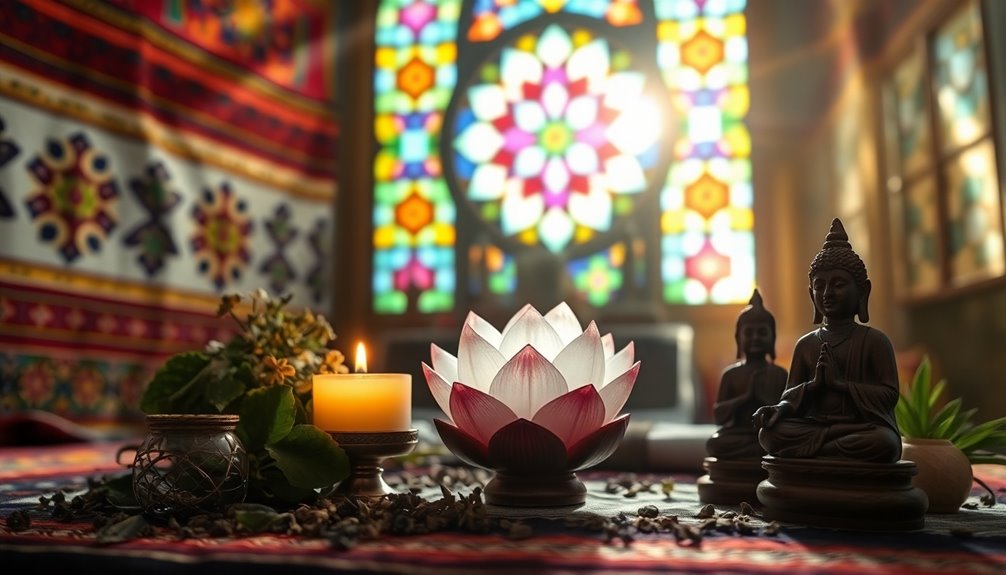
In the intricate tapestry of traditional societies, symbols serve as essential threads that weave together spirituality and everyday life. These sacred symbols help people express their beliefs and connect with the divine. For instance, many cultures create special spaces, like temples or altars, that reflect their understanding of the universe.
Mircea Eliade showed us that traditional societies see their lives linked to eternal ideas. This perspective highlights how important symbolism is in their world. However, modern life often separates these sacred concepts from daily experiences.
To help you visualize, here's a simple table:
| Symbol | Meaning |
|---|---|
| Circle | Eternity and wholeness |
| Tree | Life and growth |
| Water | Purity and cleansing |
| Light | Knowledge and truth |
Engaging with these symbols in spiritual practices can deepen your understanding of life's mysteries. It encourages you to return to traditional wisdom, helping you see beyond the material world. By embracing these sacred symbols, you enrich both your personal journey and your community, fostering joy and connection.
Frequently Asked Questions
How Is Symbolism Used in Real Life?
Symbolism is all around you! It helps you understand things quickly. For example, a red stop sign tells you to stop without using words.
In religions, symbols like the cross or the Star of David show beliefs and unite communities.
Even colors play a role! Red can make you feel excited when shopping.
National flags remind you of your country's identity and values.
How Are Symbols Used in Everyday Life?
Symbols are everywhere in your daily life!
Think about the bright red stop sign that tells you to pause or the cheerful green light guiding you to go. Colors like blue can make you feel calm, while a heart emoji brings a smile.
Logos on your favorite snacks connect you to tasty memories.
Even national flags remind you of your home and the people you share it with.
Symbols help you understand and connect with the world around you!
How Is Symbolism Used in Society?
Symbolism plays a big role in society! You see it everywhere, from warning signs, like the skull and crossbones that tell you something's dangerous, to national flags that show your country's pride.
Religious symbols, such as the cross or Star of David, bring people together. Even colors in logos can spark emotions—red for excitement and blue for calm.
In What Ways Can Symbolism Be Useful?
Did you know that 70% of people remember symbols better than words? That's why symbolism's super useful! It helps you communicate big ideas quickly, like a heart symbolizing love.
In school, symbols can make math easier to understand. Cultural symbols, like flags, bring people together, creating a sense of belonging.
Even brands use logos to connect with you emotionally. So, symbolism isn't just pretty; it's powerful and essential in everyday life!
Conclusion
To sum up, symbolism is like a treasure map that leads you to deeper meanings all around you. Whether in stories, art, or everyday life, symbols help you understand feelings, ideas, and cultures. They make connections and spark your imagination! So, next time you see a heart or a flag, think about what it really represents. By exploring symbolism, you're opening doors to new adventures in understanding the world. Keep your eyes open—who knows what you'll discover!


